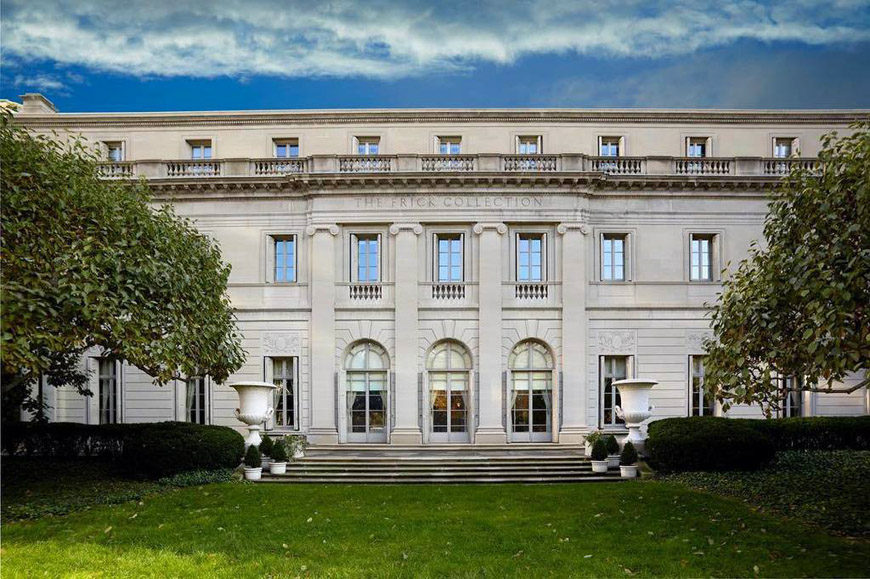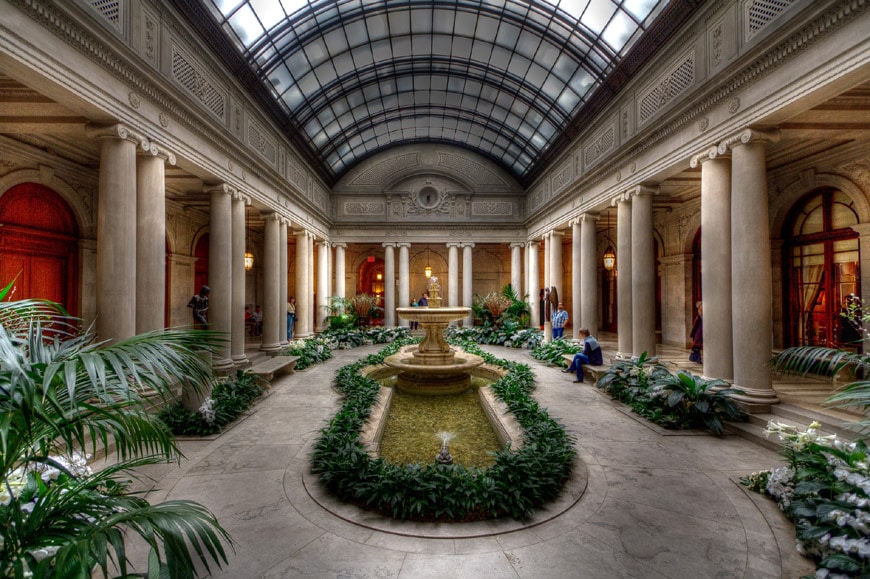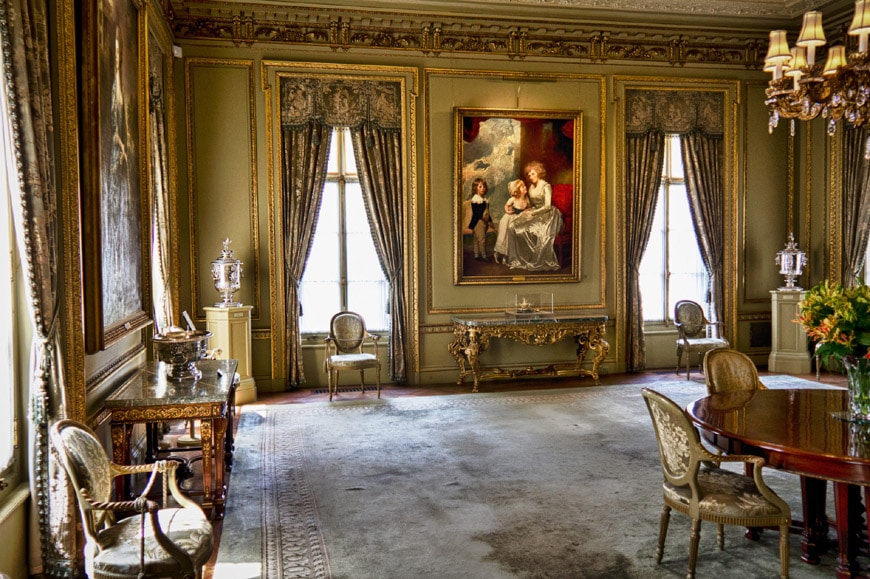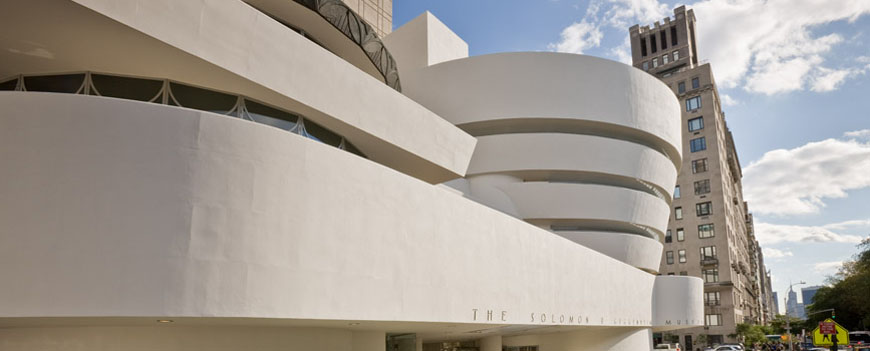Frick Collection – New York
New York, United States

The Frick Collection in New York is a museum of fine and applied arts from the Middle Ages to the mid-20th century located on Manhattan’s Upper East Side, facing Central Park.
History and building
The Frick Collection was opened to the public in 1935; the art collection on view at the time, mostly comprising old masters’ paintings, had been assembled by wealthy American industrialist Henry Clay Frick (1849–1919); the museum’s collection has been subsequently substantially enlarged through acquisitions of both artworks and objects of applied and decorative arts.
The museum is housed in an imposing mansion, once the private residence of Henry Clay Frick, designed by Thomas Hastings, also the architect of the New York Public Library. Completed in 1914, the building is a typical example, one of the few remaining, of the so-called Gilded Age architecture of New York; it is a large Beaux-Arts style construction in which references to French neoclassical and Italian Renaissance architecture combine.
Intending to transform the house into a museum, in the early 1930s, the Frick family and the museum’s trustees commissioned a major building redesign to renowned American architect John Russel Pope, who added two large galleries and a lecture hall to the original mansion.
Over time, the museum has been expanded with new pavilions and a garden, designed in 1977 by British landscape architect Russel Page.
The interior spaces of the building are even more eclectic than its exterior, with Rococo-style rooms that alternate with Neoclassical, Empire, Renaissance, and Georgian-style ones in a sort of anthology of European interior decoration.
The Frick Collection, the Garden Court; photo: Paul Gorbould
Collection and permanent exhibition
The Frick Collection is a quintessential example of a personal collection transformed into a museum. It, therefore, retains all the fascinating character of the private house of an eclectic art lover rather than featuring an ordered and scientifically arranged permanent exhibition as it usually happens with typical museums.
The museum’s permanent exhibition encompasses 16 galleries, none of which is focused on a specific period, provenance, or art style; but based on free aesthetic relationships between artworks, as well as between them and their architectural context.
As anticipated, the Frick Collection contains both fine artworks and objects of applied art.
The fine art collection includes paintings, sculptures, drawings, and prints.
Notable paintings on view include works by Cimabue, Filippo Lippi, Piero della Francesca, Hans Memling, Agnolo Bronzino, Paolo Veronese, Jacopo Tintoretto, Titian, Francisco de Goya, Anthony van Dyck, Rembrandt van Rijn, Johannes Vermeer, Georges de La Tour, Peter Paul Rubens, Diego Velázquez, Giovanni Battista Tiepolo, Jean-Baptiste-Camille Corot, William Turner, Édouard Manet, and James McNeill Whistler.
The sculpture collection features works by Andrea del Verrocchio, Andrea della Robbia, Antonio Pollaiuolo, Gian Lorenzo Bernini, and Jean-Antoine Houdon, among many others.
The Frick Collection also holds exceptional drawings by Rembrandt, Rubens, van Dyck, Ingres, Constable, and Whistler.
The collection of applied arts comprises ceramics, enamels, furniture, silvers, textiles, medals, and clocks; including many Chinese and French porcelains and rare Persian carpets.
The Frick Collection, the West Gallery; photo: Michael Bodycomb
Program of activities and events, visitor services
Along with the art museum, the Frick Collection also features a 230,000-volume library, focused on art from the early Middle Ages to the mid-twentieth century, two gardens, and a shop.
The museum also hosts temporary exhibitions, lectures, talks, concerts, art workshops, and educational programs for children, adults, and families.
The museum is generally accessible to physically-impaired people, with some limitations due to the structure of its historic building.
Image Gallery
The Frick Collection, the Living Hall: photo: Michael Bodycomb
The Fragonard Room: photo: Michael Bodycomb
The Dining Room; photo Paul Gorbould
Pieter Bruegel the Elder, The Three Soldiers, 1568, oil on oak panel; photo courtesy of The Frick Collection
Agnolo Bronzino, Portrait of Lodovico Capponi, 1550–55, oil on poplar panel; photo courtesy of The Frick Collection
Johannes Vermeer, Mistress and Maid, 1666−67, oil on canvas; photo courtesy of The Frick Collection
Cover image: The Frick Collection, New York, Fifth Avenue Garden and
facade; photo: Michael Bodycomb
How our readers rate this museum (you can vote)
copyright Inexhibit 2024 - ISSN: 2283-5474











 (4 votes, average: 3.75 out of 5)
(4 votes, average: 3.75 out of 5)
